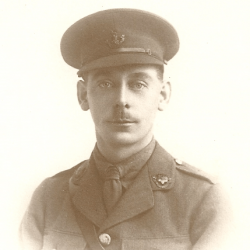Sanitation was a huge issue in World War One. Soldiers in the trenches, both on the Western Front and in Gallipoli, living for months (and years) in difficult circumstances contracted various infestations and diseases related to the unsanitary conditions. Pte. Arthur Slater was twice hospitalized for scabies and men were also hospitalized for lice infestations. In such cases, apart from medically treating the patient, it was also necessary to disinfect their clothes and personal effects. The Thresh Disinfector was used for this purpose.
In Mesopotamia, disease (at least in the early years) was almost as dangerous to the health of the soldiers as the Turks. The war diary of the Assistant Medical Director Services, Basra makes mention of Thresh Disinfectors being ordered, arriving and being distributed to the various camps used by the troops.
Some History
In 1870, Washington Lyon was working in the field of chemical disinfectants and served as the chair of his local sanitary committee. He took an interest in the process of vermin disinfection which lead to his high pressure Steam Disinfector patent ten years later.
In 1904, John Thresh, of the Thresh Disinfector Company of 66 Victoria Street, Westminster, London, took out a patent for an improved Disinfector – a device by which low pressure steam was used to disinfect bedding and clothing. Hot air was also created within the appliance, enabling drying of the contents to also take place. These disinfectors, sometimes mounted on wheels, were supplied to the War Office as well as Crown Agents for sale and use across the colonies. The appliances were made in Keighley, West Yorkshire.
Thresh Disinfectors used a calcium chloride solution to create steam that could penetrate materials at lower pressures than previous methods and could complete disinfection in as little as fifteen minutes. The basic process was as follows. First, infected materials including clothing, sheets, and mattresses were wheeled into the chamber and the chamber door was closed, providing an airtight seal. Next, low-pressured steam entered the interior chamber through the inlet valve, penetrating materials inside at a high, constant temperature. Finally, the steam was blown off the materials with hot air and the other chamber door was opened to wheel the materials out. The entrance and exit were separated to prevent contact between infected and disinfected materials.

